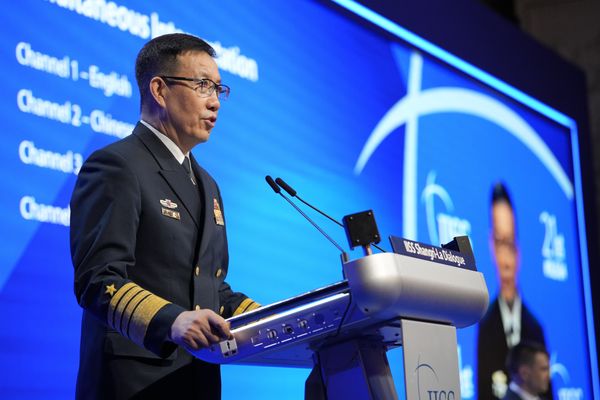
Many of New South Wales’s top vice-chancellors received large pay increases last year at the same time public universities across the state plunged into deficit.
The 2022 annual reports of NSW universities, lodged on Wednesday, revealed six vice-chancellors received pay increases – some worth an extra $200,000 – despite the fortunes of their institutions reversing.
The University of Wollongong’s vice-chancellor Patricia Davidson’s pay jumped from about $780,000 to more than $1m including superannuation, while the university posted a $28m deficit.
Davidson previously earned a salary of $610,000, while her predecessor’s remuneration in 2020 was about $980,000.
A spokesperson for the University of Wollongong said it had reinstated staff salary increases that were paused for 18 months during Covid-19, contributing to an increase in wage and salary costs.
The University of Newcastle, Western Sydney University, The University of Technology and Charles Sturt University also increased their vice-chancellors’ pay packages, while an annual rise at the University of New England was split between its former and interim vice-chancellor.
Barney Glover, the vice-chancellor at Western Sydney University, had a $1m pay package that included an office expenses allowance, a salary-sacrificed motor vehicle and a housing allowance in place of an additional bonus.
The tertiary sector has firmly returned to the red after 2021’s surprise record surplus, the annual reports revealed, with pandemic cuts and losses coming back to bite.
Universities across NSW posted a combined deficit of around $120m, majorly offset by outlier the University of Sydney, which logged a $298m surplus. The Australian Catholic University revealed a modest surplus of $0.2m.
Despite the downturn, six of the state’s 11 vice-chancellors were earning more than $1m a year.
Mark Scott at the University of Sydney had the highest salary of $1.1m including bonuses, after joining the university in 2021. Former vice-chancellor Michael Spence was earning $1.6m annually in 2019.
The salary of UNSW vice-chancellor, Attila Brungs – at $1.05m including superannuation – was below the $1.3m salary of former vice-chancellor Ian Jacobs.
Alison Barnes, the president of the National Tertiary Education Union, said it was “absolutely outrageous” that some vice-chancellors were taking home double what the prime minister earned.
The NTEU’s submission to the upcoming Universities Accord calls for a cap on executive salaries in line with community standards.
Similarly, the Australian Association of University Professors said in its submission that salaries should be capped at roughly double the earnings of a senior professor, equating to about $400,000 a year.
“Million-dollar salaries for people in charge of public universities are wildly out of touch with community expectations,” Barnes said.
“University staff bore the brunt of Covid-induced job cuts and now are rightly calling for fair pay rises during an inflationary crisis.
“The strikes and industrial action we’ve seen in New South Wales this week, and nationally in recent weeks, are being fuelled by the deeply unfair contrast between vice-chancellors earnings and our members’ fair requests for better pay, secure jobs and safe workloads.”
Strike actions are being held at three NSW universities – Macquarie University, the University of Newcastle and UNSW – this week, as enterprise bargaining negotiations over pay rises and secure work placements continue.
Of the six prestigious Group of Eight universities that have lodged their 2022 annual reports, all but the University of Western Australia pay their vice-chancellors annual wages in excess of $1m.
Duncan Maskell at the University of Melbourne is on the highest salary, at about $1.5m a year. The university posted a $203m deficit in 2022.
Nationally, 25 of the 32 universities that have posted their financial results for last year are in the red, with South Australia, Tasmania and the ACT still to report.
The NSW universities’ results were subjected to interrogation by the state’s auditor general who found an overall decline on 2021 results, as spending to welcome students back to face-to-face learning rose while overseas student revenue declined slightly.
In a report tabled on Wednesday, the auditor also uncovered that two universities had suffered financial losses from cyber-attacks in 2022.
The auditor general found there was a lack of consistency between universities in how cyber-attacks were defined and dealt with, as well as insufficient work being done to protect the personal data of students and staff at some institutions.
It also made two recommendations, including conducting reviews of employment agreements and historical pay practices to identify potential underpayments.







